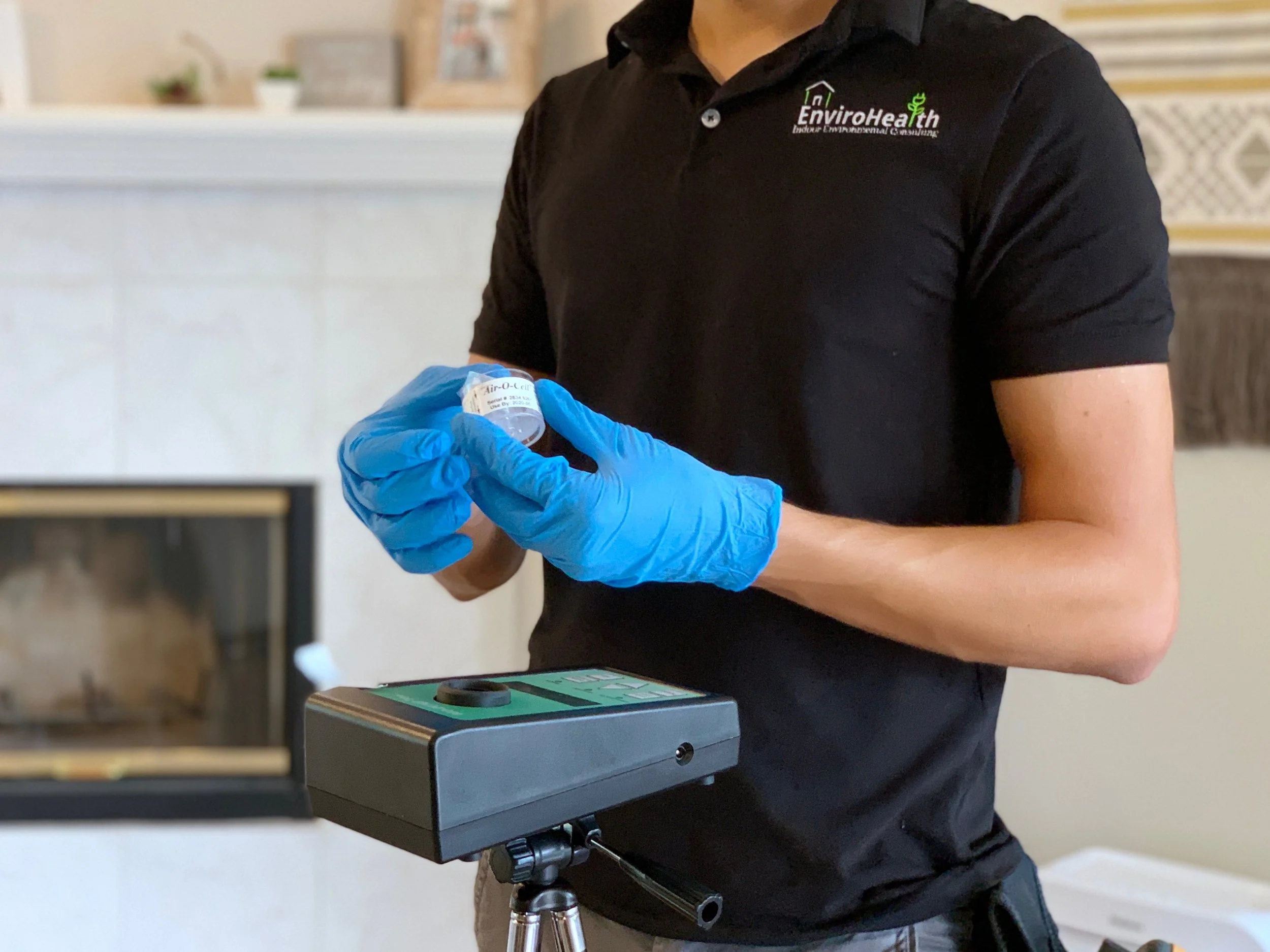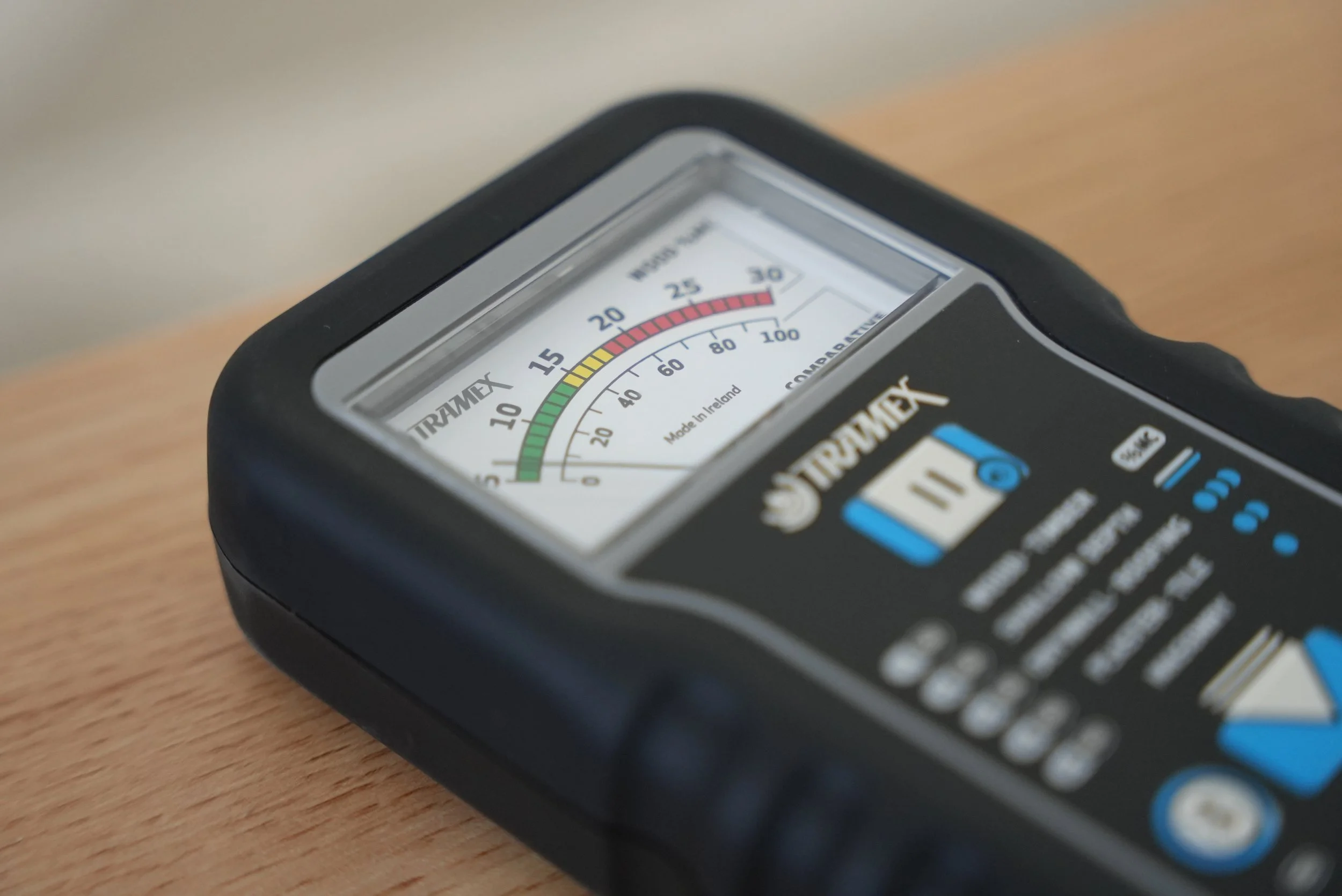
Mold Investigation
EnviroHealth takes pride in our investigation thoroughness. We believe that every mold inspection should first prioritize the actual visual inspection.
These days, almost anybody can go purchase mold test kits online. But what can’t be easily purchased is the knowledge and experience of an environmentalist who specializes in building science and mycology (the study of fungus).
What Is the Process for a Mold Investigation?
Step 1: The Visual Assessment
The first step of a mold investigation is gathering the history of the building/home and performing an extremely thorough visual assessment. The visual assessment includes an inspection of the building, the HVAC, and occupant behaviors. High-risk areas (such as bathrooms, kitchens, attics, air conditioning, etc.) are a prime focus of our investigation. However, there are some more nuanced issues that can occur in a home that should also be investigated. That’s where an expert comes in.
Measurements and testing should only be performed once a thorough assessment has been completed. It is important to realize that all testing methods have limitations, and choosing the right test for the situation and understanding its limitations is crucial. If testing is performed without already understanding the potential issues in the building, it is essentially random guesswork, which can be misleading and a waste of time and money.
Step 2: Measurement and Testing
Our measurements and testing methods include advanced, top-of-the-line tools such as moisture meters, thermal imagining, hygrometers (to measure humidity, dew point, vapor pressure, etc.), smoke machines, pressure sensors, and more.
EnviroHealth also separates itself from the rest with a specialty in Mycology and the ability and certifications to perform on-site microscopy. This means that if visual mold is observed during the inspection, it can be identified immediately, without waiting for lab results. Only the more complicated sampling methods (dust DNA testing, air sampling, etc.) will be sent to labs. This also allows for additional information to aid the investigation.
Step 3: Creating a Report and Protocol
All of the data gathered during the investigation (the visual observations, measurements, lab results, etc.) will be combined and summarized in a very easy-to-read report that includes photos and even videos, if needed. Our reports are so easy to read that you don’t need to have any knowledge of the industry in order to understand the concepts. This also makes it easier for others to understand when sharing the report (to insurance adjusters, remediation specialists, HVAC technicians, contractors, etc.)
If work is needed, you will also receive a protocol (official recommendations) on how to move forward with solving any issues in your home. They may include recommendations on presentation strategies or fully detailed mold remediation plans, depending on your needs. We strongly believe that you should not have to be charged extra in order to receive a protocol, so it is included in the cost.
Is our
Indoor Environmental Investigation
right for you?
Mold is not the only air quality issue in a home. Anytime we hear “we are sick in our home and don’t know why”, that is cause to perform a more holistic investigation. If we just focus on mold (which is of course on the forefront of homeowner’s minds), we can miss so many other issues that could impact the air quality; especially for occupants that are already facing health issues related to mold and need a place to heal. So what’s the difference between the Mold investigation and Indoor Environmental Investigation?
FAQs
-
A typical inspection cane around 1-2 hours for every thousand square feet. So for example, if you have a 3,000 square foot house, that could take anywhere between 3-6 hours. The length of time depends on how many issues we come across. We are investigators at heart. The more issues we find, the longer it takes to dive into them and ensure we understand them fully. However, if the house is squeaky clean, we get through it much faster.
-
Think of sampling like a detective’s toolkit — we don’t believe in a “best” tool, we believe in using the right tool for the situation.
Just like a detective might use fingerprints in one case, a surveillance camera in another, and a witness interview in a third — we use different sampling methods depending on what we’re trying to uncover. Each one has its strengths and limitations, and part of our expertise is knowing when and how to apply each one.
We offer a wide range of sampling options (air, surface, bulk, dust, VOC, moisture mapping, etc.) — not because more is better, but because every case is different. Our job is to choose the most effective and appropriate method to get answers that matter, not just data on paper.
The samples that are included in your investigation are spore trap air samples and/or direct samples. However, if more advanced testing is needed, we have those options available. -
Please refer to travel application form for specific pricing.
-
A mold investigation involves a comprehensive assessment of both the exterior and interior of the home. The goal is to determine where mold is present, how extensive the issue is, and how it can be properly and safely remediated.
We approach each investigation using advanced building science principles to identify any underlying issues with the structure or mechanical systems that could be contributing to moisture problems or mold growth.
Your inspection includes:
Thermal imaging
Full moisture mapping
Ambient humidity and dew point readings
Inspection scoping
Basic pressure testing
And more
For Jacksonville-area clients, the inspection includes three samples. For travel investigations, we provide unlimited sampling, allowing us to take as many samples as needed to fully understand the condition of the home and develop an accurate remediation plan.
This flexibility is a significant value — it ensures we’re not limited by sample count when gathering data and helps minimize the risk of needing a return visit later to sample areas that may only become suspect after initial lab results are reviewed.
The cost of the investigation also includes an easy-to-read written report along with a detailed protocol for preventative measure and for mold remediation.
This is your path to wellness.
More videos, you say?
5 Questions to Ask Before Hiring a Mold Remediator
How much does a mold inspection cost?
The Importance of Understanding Mycology
The Difference Between a Mold Investigation and Indoor Environmental Investigation



